Spatial Feelings Studio
RCA advanced masters elective
2023-24
Space
Feeling
Architecture
Research
Workshop
Pedagogy
RCA advanced masters elective
2023-24
Space
Feeling
Architecture
Research
Workshop
Pedagogy
The 2023-24 Spatial Feelings studio
Royal College of Art London
Dr Adam Kaasa
Winter Term (Jan-April 2024)
(elective offered to advanced masters student cross-college at teh RCA: MFA Arts and Humanities, MFA Communications, MDes Design Future, MEd Creative Education, Master of Research (MRes), and MArch Design Practice)
Guest Lecturer: Stefan Jovanović
***
2023-24 Focus
In 2024 students formed interdisciplinary teams, and had to create a 1 hour workshop for the ‘In Our Feelings’ symposium, 4 March 2024. Starting and ending at the RCA Battersea campus, students were encouraged to consider a variety of spatial atmospheres, and to design interactive workshops that would elicit a conversation across space and feeling.
Outcomes included: Collective Scoring, Walking Bridge Clay Making, a trans-geographic presentation of writing on public space (with chalk) London-Hong Kong, a multi media installation with spoken word. Images below.
Description
This unit explores spatial feelings as emotional geography. The unit works across scale tying feelings to affective economies like the large of election campaigns or protest movements, to the vastness of the experience of shared grief or loss and the optimism of ambition, or to the minor of the monotony of the everyday. We consider how the terrain of emotions – amplified through art and humanities practice, spatial practice, media and the urban – not only move us but move the world.
Approaching emotions through the speculative, the fabulated and the structure of new forms of narration, or through interruptions, glitches and ruptured registers this unit reveals the history and present of how spatialised art practice frames and forms the feelings that shape our contemporary social life, intergenerational relations and equalities.
Feelings matter. This unit interrogates this in a literal sense. Feelings matter because they emerge from a relationship to the material worlds around us. And they matter because they have an effect on those same material worlds. Feelings are bound to place - and so what we feel about a place - matters. How we feel about it can be conditioned in language and in aesthetics. And how these land on our bodies changes dramatically based on a multitude of factors. There are emotional geographies that we live in and these geographies are unequally distributed across intersectional factors of race, gender, sexuality, class, ability, geography and other factors.
This matters in profound ways: what we feel in a city or a site organises spectacle, connection, capital, demolition, 'regeneration' and so much else. While emotions may be democratic in the sense that many of us can feel a wide range of them a question remains both of how they end up 'mattering' in the world - what effect these have on the bodies that feel them, how often they come to feel them.
This unit is organised around situating work in relation to structures of feeling. Over the course of the unit, work in progress will be re-sited in various locations, and in relation to various structures across the city - physical and social. The affective encounter between site and situation will organise an ongoing discussion of the work in relation to shifting emotional geographies and demonstrate the ways in which art, space and feeling are co-constituting. A final group presentation of works will act as the assessment for this course and will present the affective journeys of the work creating narratives of spatial feeling.
Royal College of Art London
Dr Adam Kaasa
Winter Term (Jan-April 2024)
(elective offered to advanced masters student cross-college at teh RCA: MFA Arts and Humanities, MFA Communications, MDes Design Future, MEd Creative Education, Master of Research (MRes), and MArch Design Practice)
Guest Lecturer: Stefan Jovanović
***
2023-24 Focus
In 2024 students formed interdisciplinary teams, and had to create a 1 hour workshop for the ‘In Our Feelings’ symposium, 4 March 2024. Starting and ending at the RCA Battersea campus, students were encouraged to consider a variety of spatial atmospheres, and to design interactive workshops that would elicit a conversation across space and feeling.
Outcomes included: Collective Scoring, Walking Bridge Clay Making, a trans-geographic presentation of writing on public space (with chalk) London-Hong Kong, a multi media installation with spoken word. Images below.
Description
This unit explores spatial feelings as emotional geography. The unit works across scale tying feelings to affective economies like the large of election campaigns or protest movements, to the vastness of the experience of shared grief or loss and the optimism of ambition, or to the minor of the monotony of the everyday. We consider how the terrain of emotions – amplified through art and humanities practice, spatial practice, media and the urban – not only move us but move the world.
Approaching emotions through the speculative, the fabulated and the structure of new forms of narration, or through interruptions, glitches and ruptured registers this unit reveals the history and present of how spatialised art practice frames and forms the feelings that shape our contemporary social life, intergenerational relations and equalities.
Feelings matter. This unit interrogates this in a literal sense. Feelings matter because they emerge from a relationship to the material worlds around us. And they matter because they have an effect on those same material worlds. Feelings are bound to place - and so what we feel about a place - matters. How we feel about it can be conditioned in language and in aesthetics. And how these land on our bodies changes dramatically based on a multitude of factors. There are emotional geographies that we live in and these geographies are unequally distributed across intersectional factors of race, gender, sexuality, class, ability, geography and other factors.
This matters in profound ways: what we feel in a city or a site organises spectacle, connection, capital, demolition, 'regeneration' and so much else. While emotions may be democratic in the sense that many of us can feel a wide range of them a question remains both of how they end up 'mattering' in the world - what effect these have on the bodies that feel them, how often they come to feel them.
This unit is organised around situating work in relation to structures of feeling. Over the course of the unit, work in progress will be re-sited in various locations, and in relation to various structures across the city - physical and social. The affective encounter between site and situation will organise an ongoing discussion of the work in relation to shifting emotional geographies and demonstrate the ways in which art, space and feeling are co-constituting. A final group presentation of works will act as the assessment for this course and will present the affective journeys of the work creating narratives of spatial feeling.

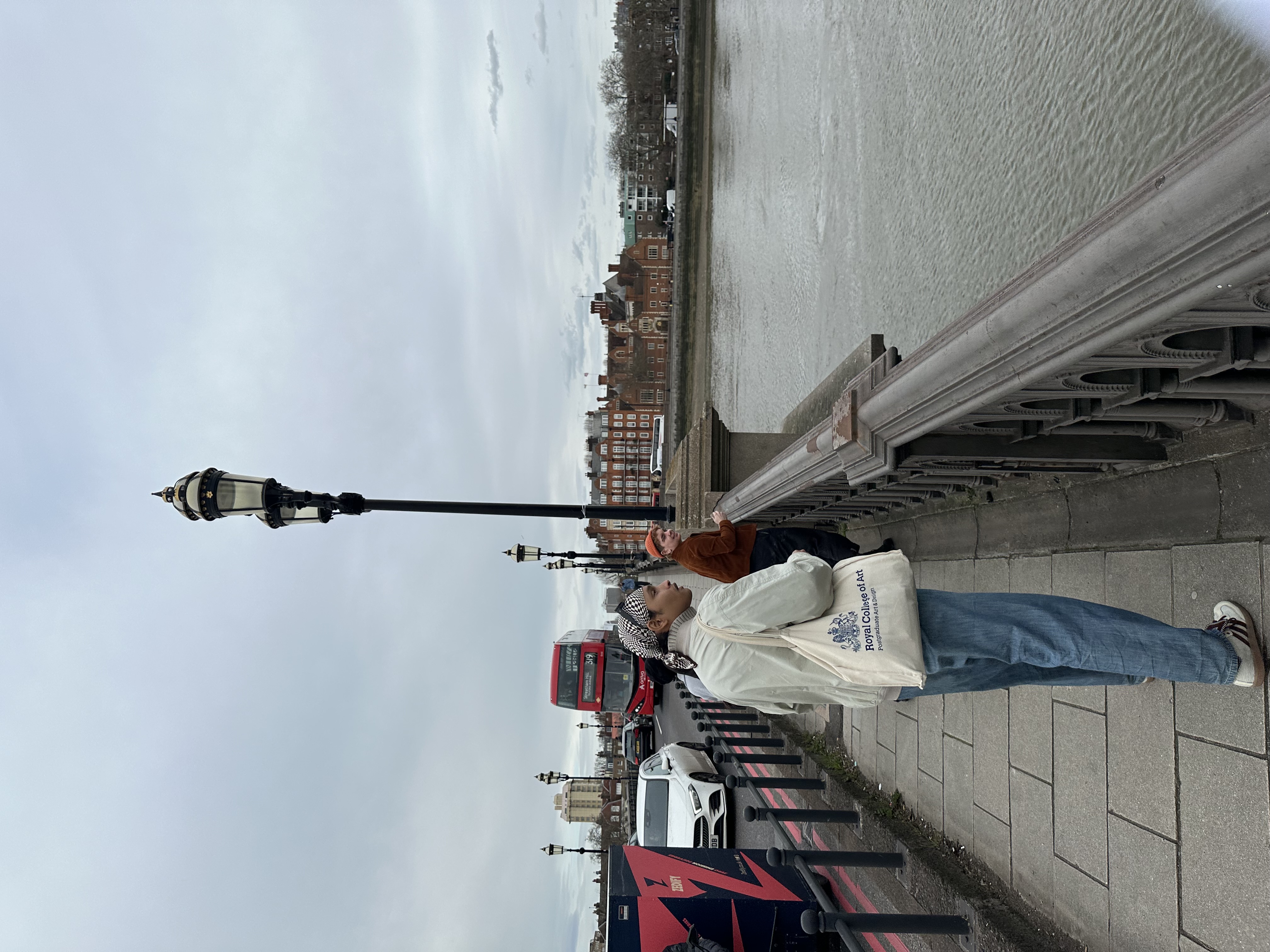
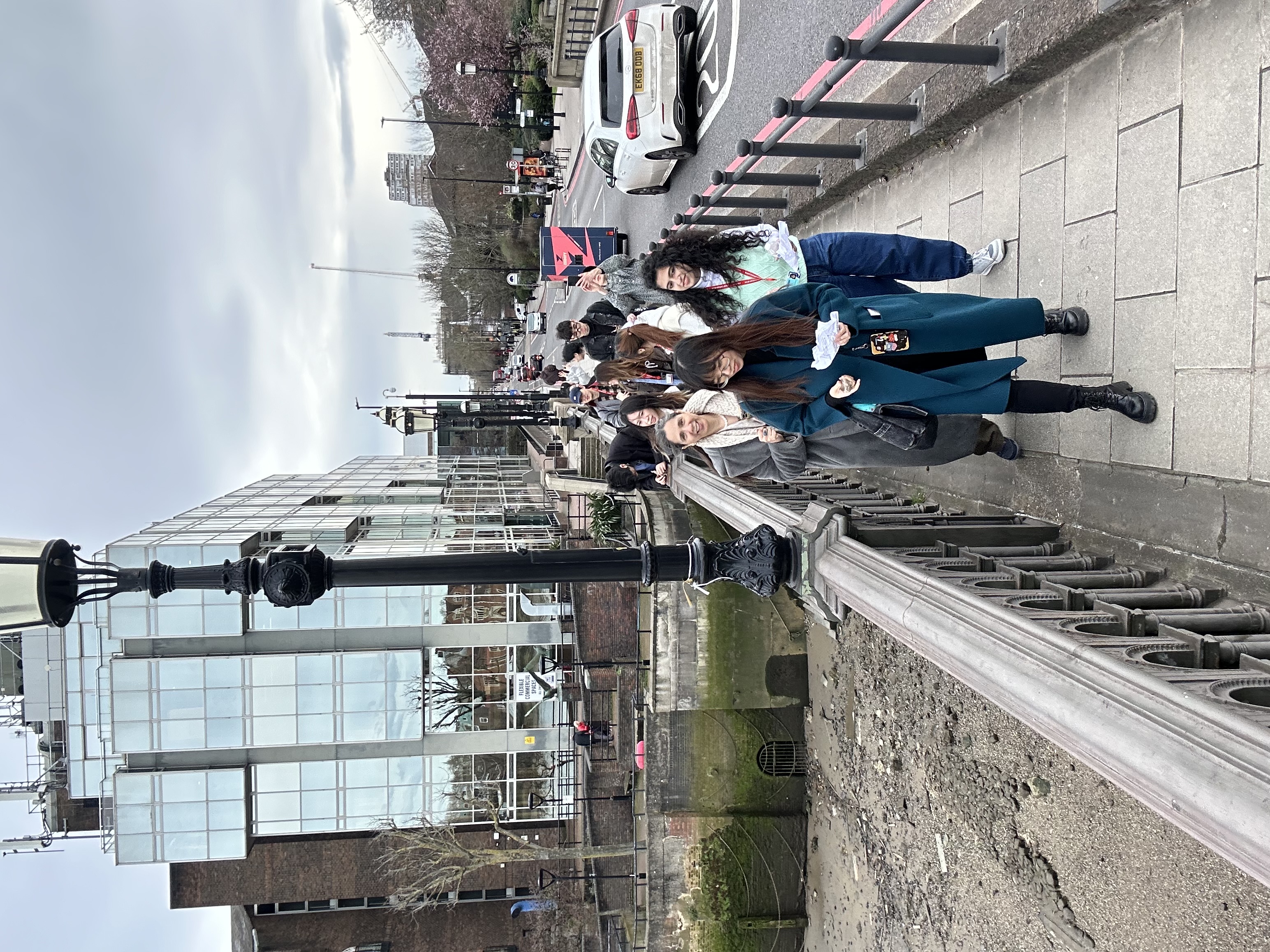
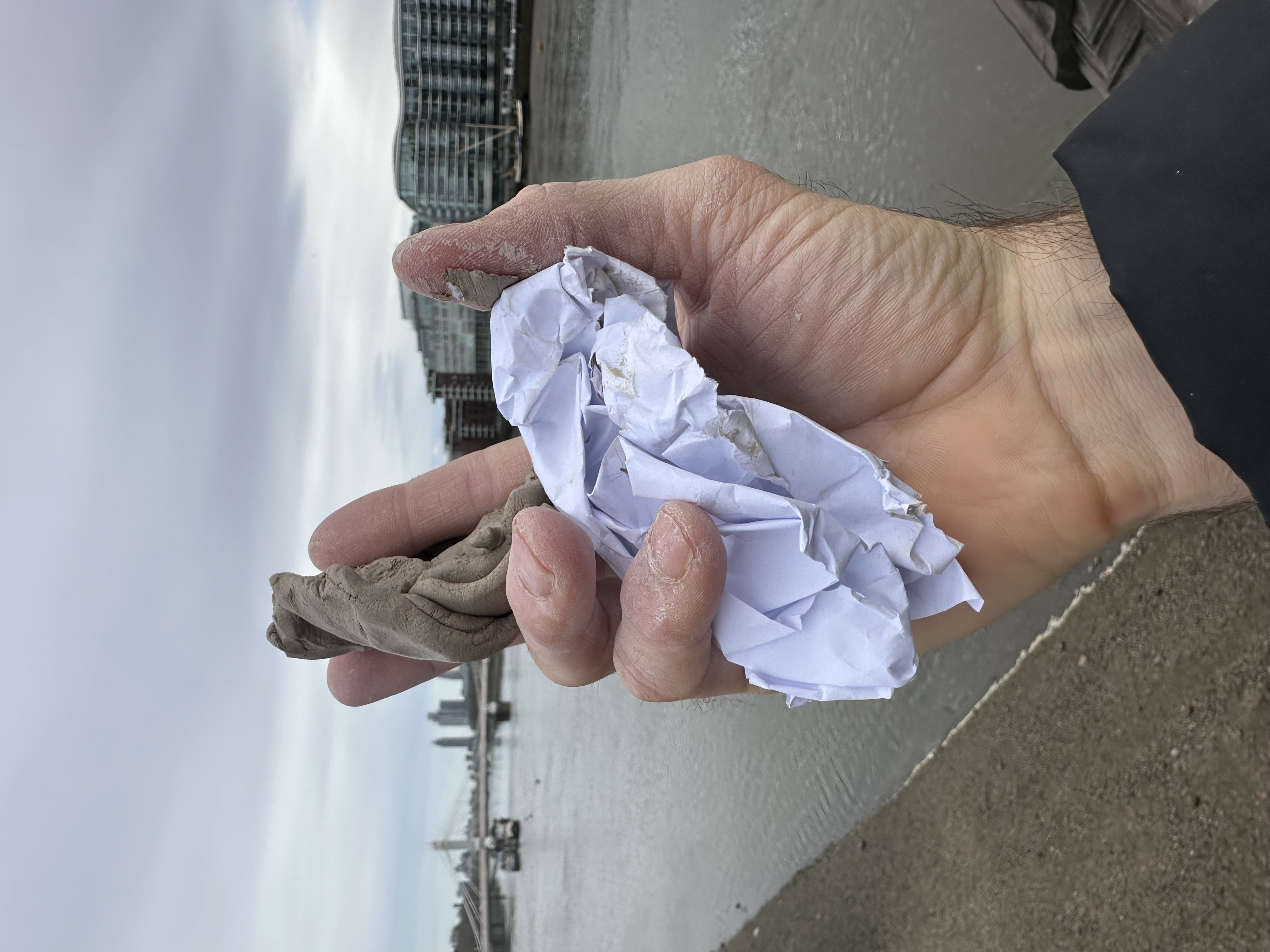
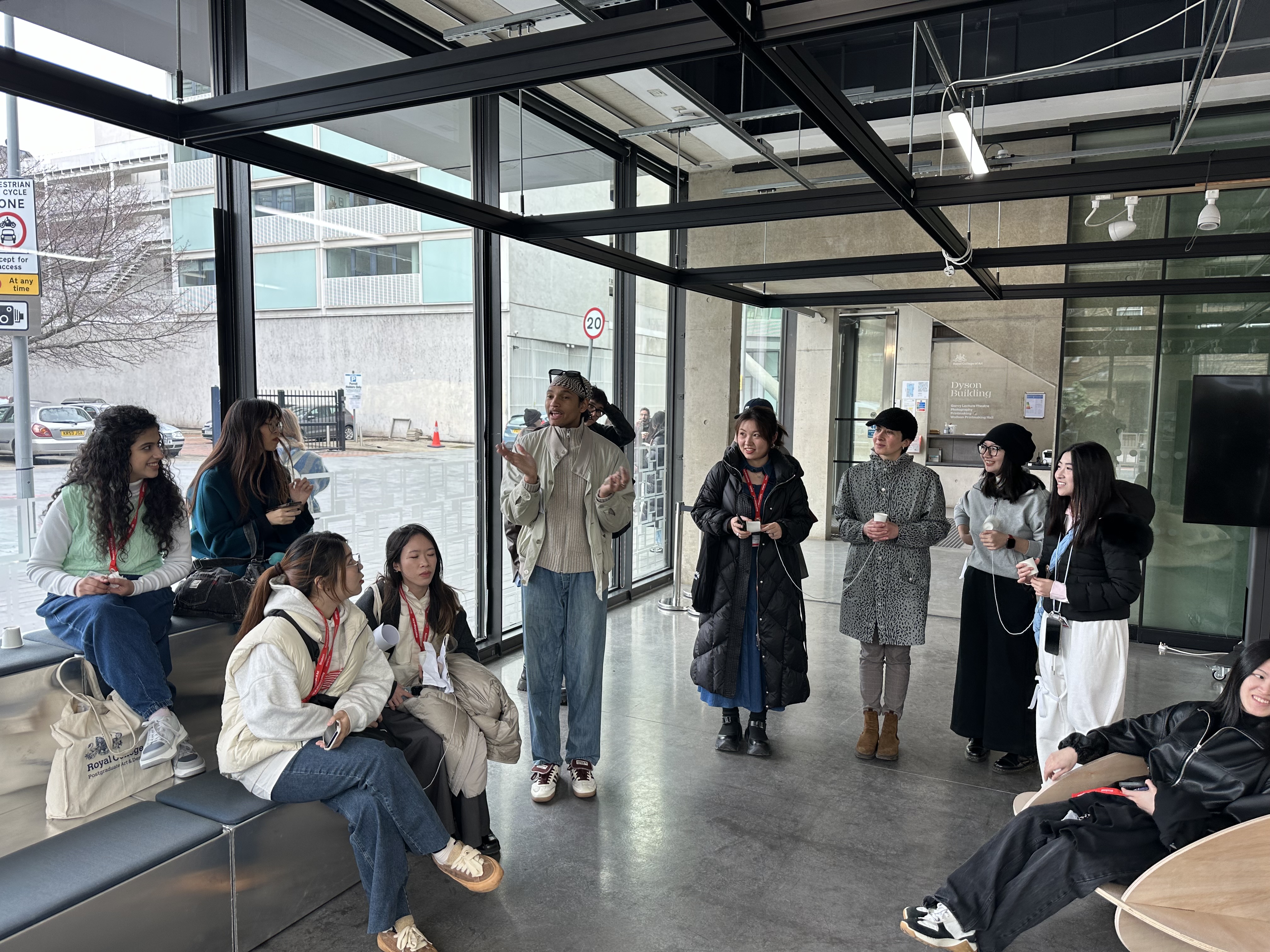
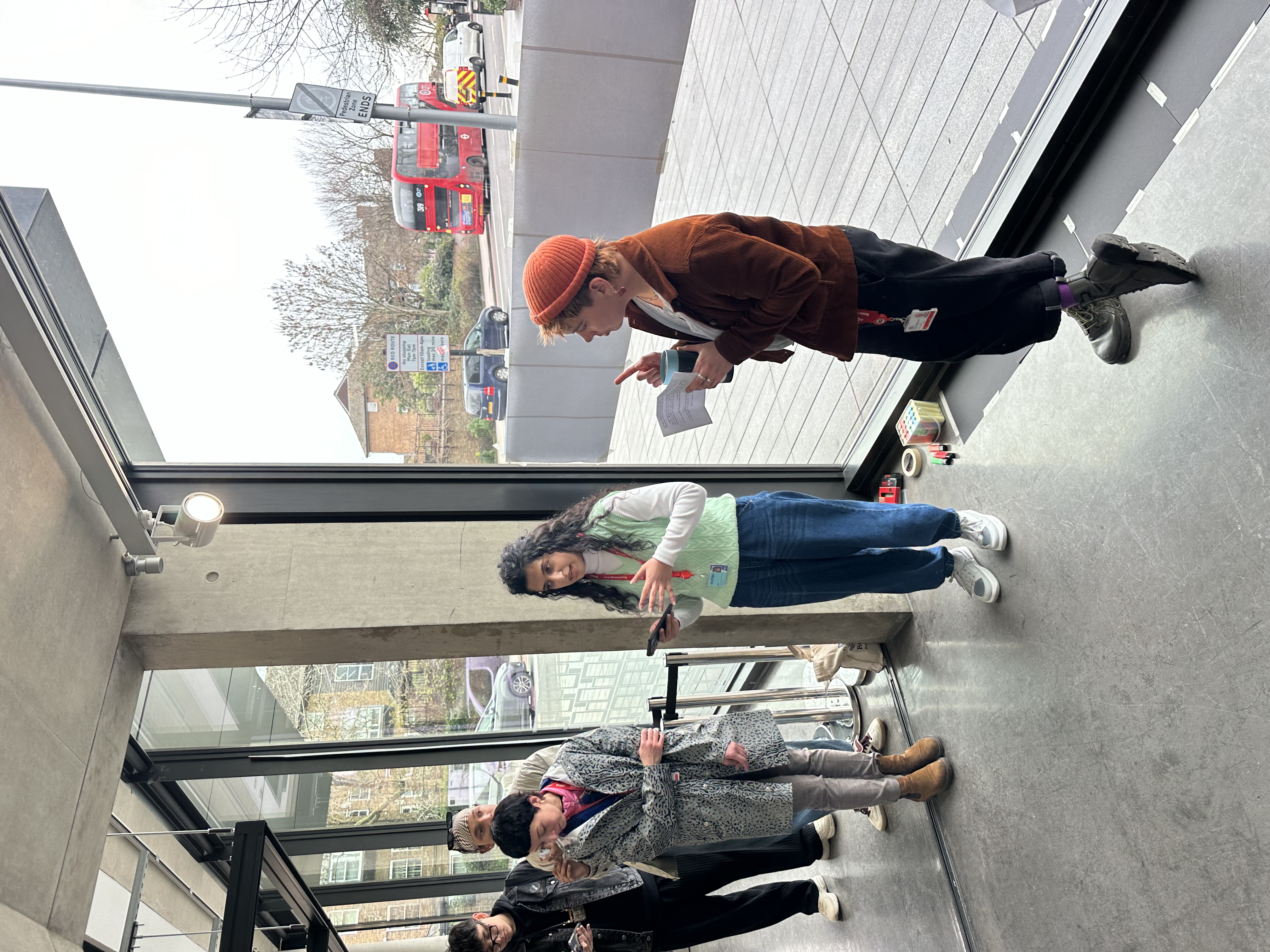
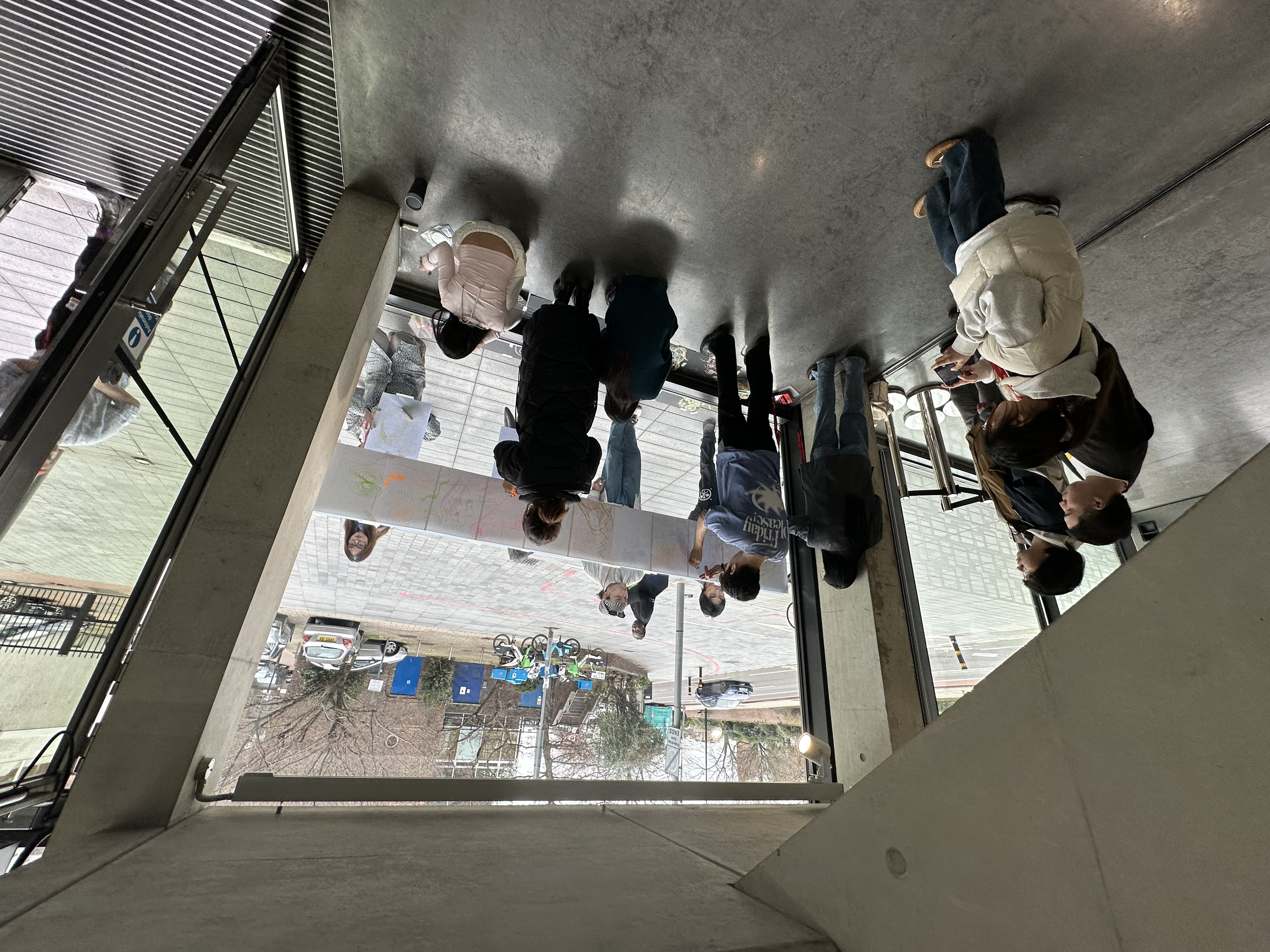




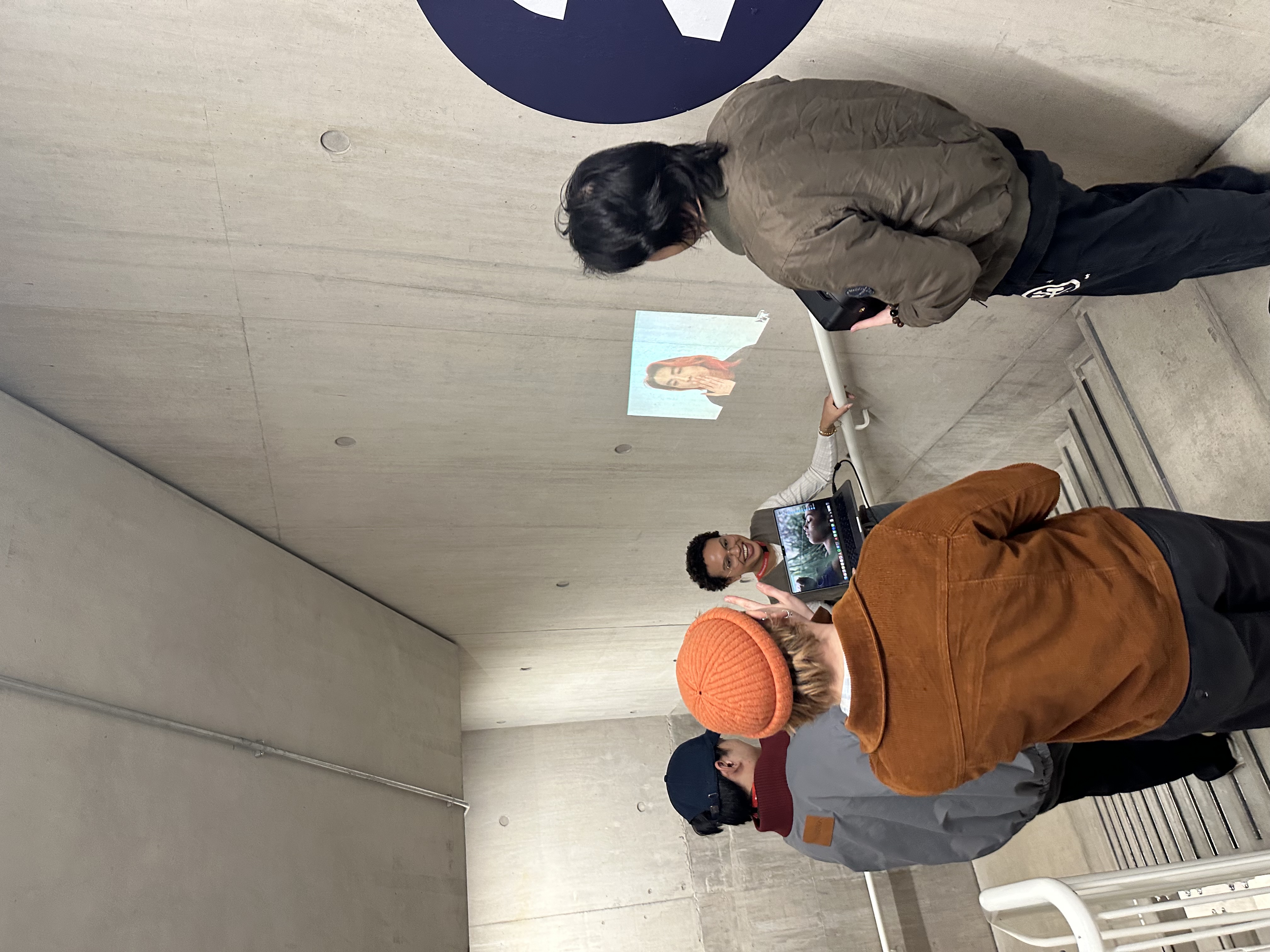


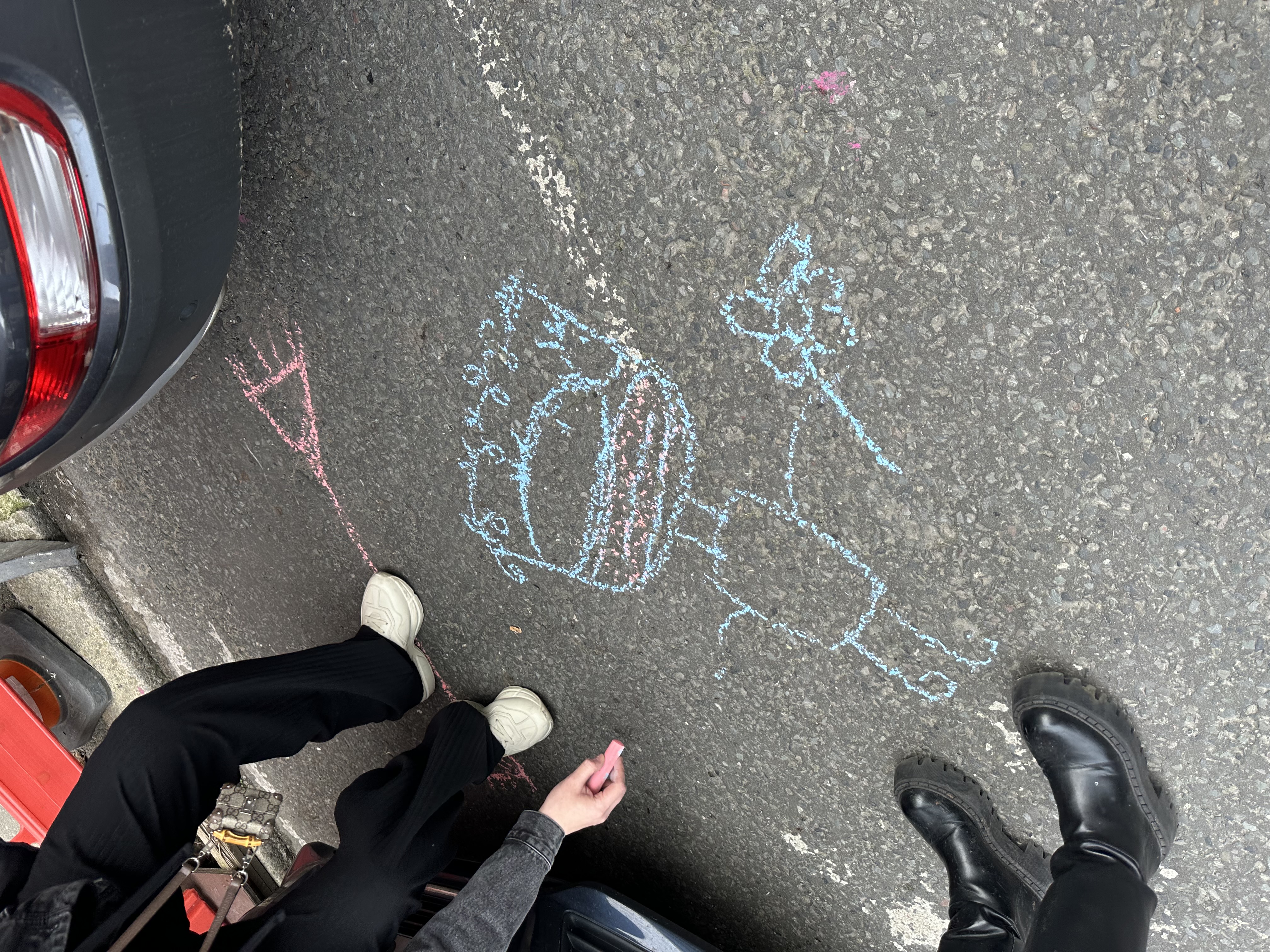

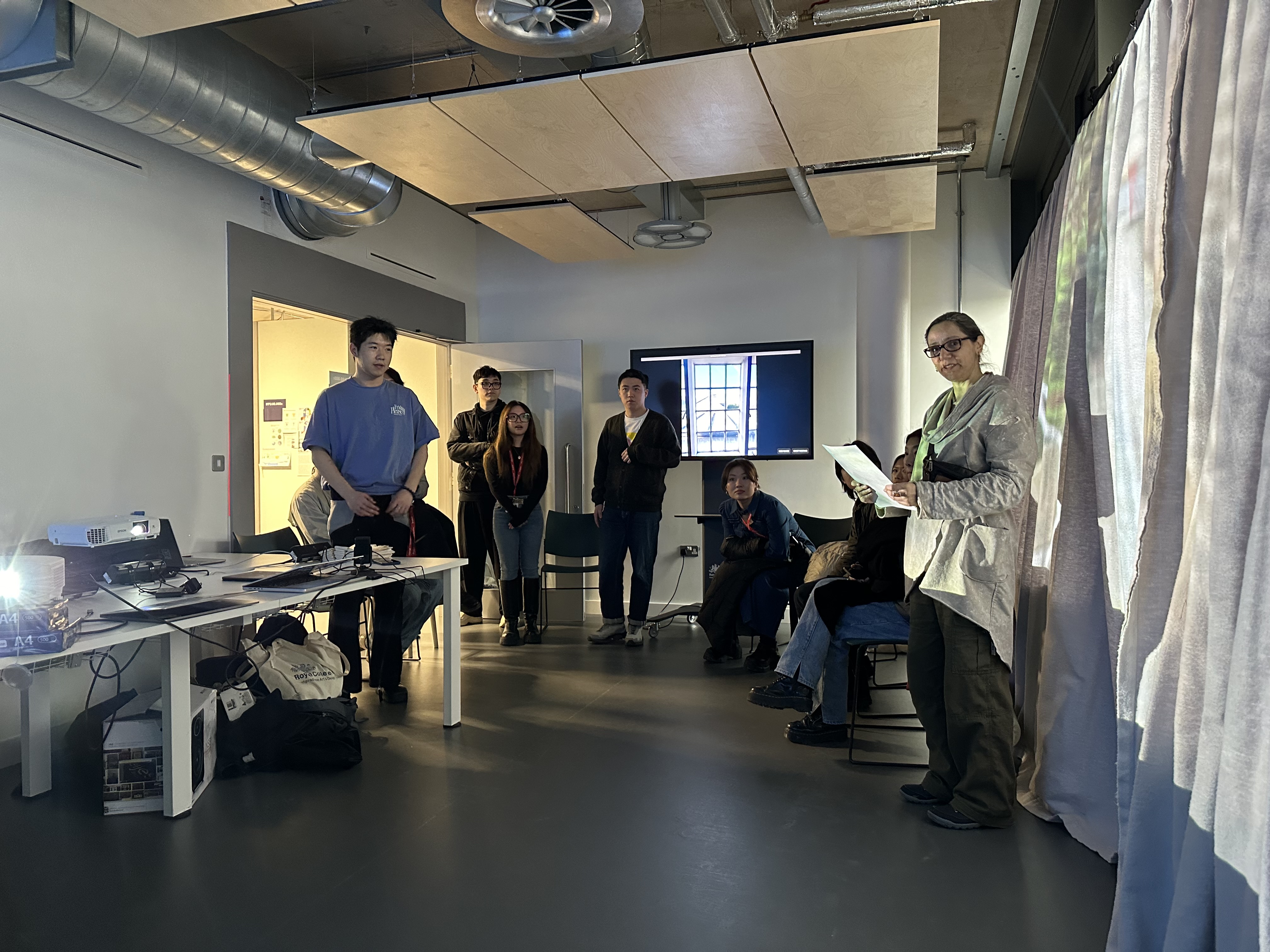
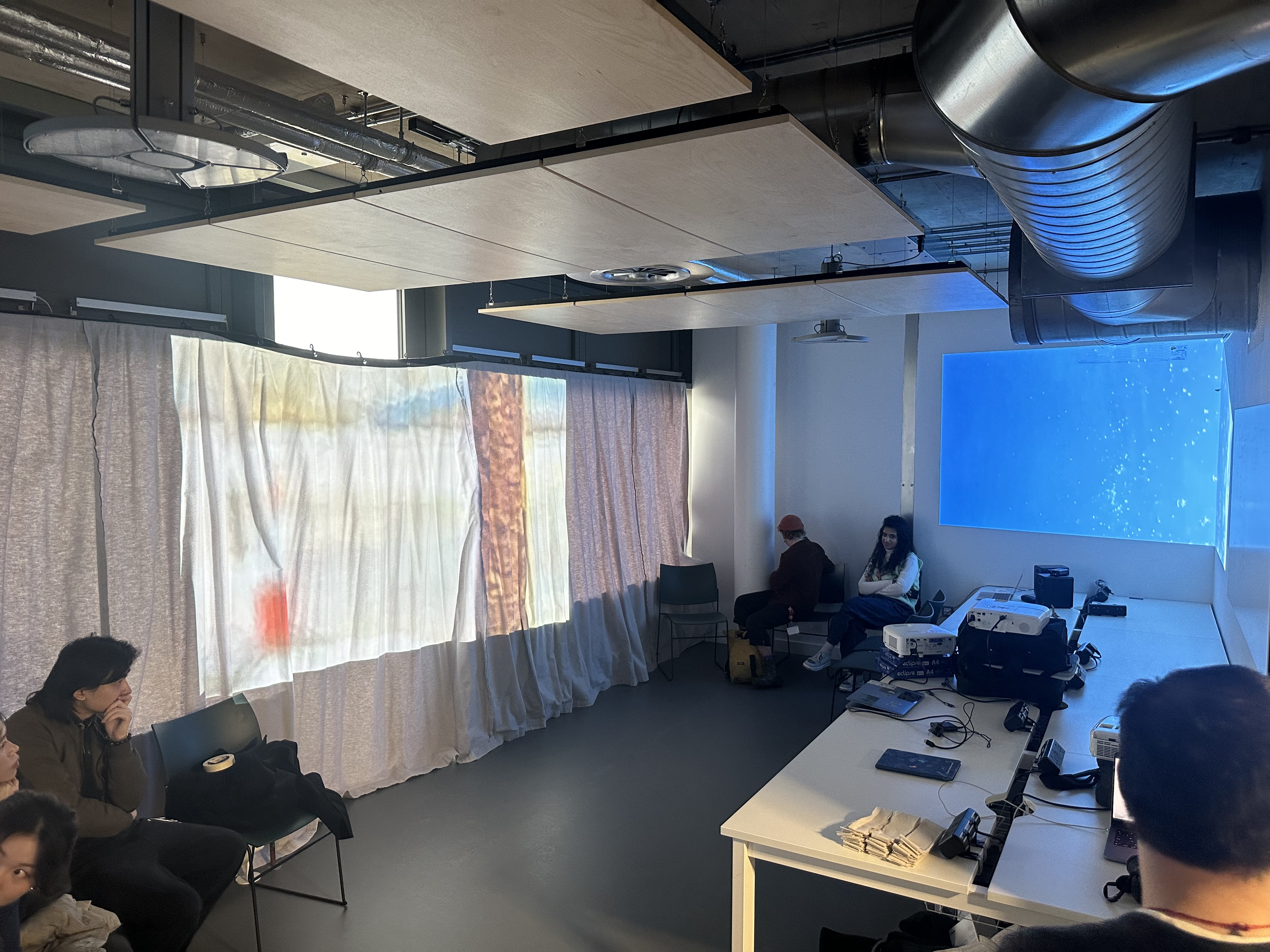

Images from the final presentations for Spatial Feelings, RCA, March 2024.